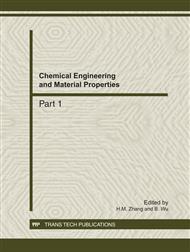p.377
p.381
p.385
p.390
p.395
p.400
p.404
p.409
p.418
The Structure of the Turtle Shell and the Porous Metal Mimicking the Structure of the Turtle Shell
Abstract:
The turtle shell, as the oldest amphibian, has developed a rigid calcified shell to protect the soft body against environmental pressures and predators. The paper has studied the effect of microstructure on the mechanical behavior of the turtle shell. Furthermore the porous Fe-Cr based alloy was manufactured by the method of powder metallurgy. The results showed that turtle shell was composed of the element of Ca, P, C, Cl and Na etc. The microstructure of turtle shell is a sandwich structure typical of flat bones with the compact layer, the spongy layer with many pores and the fibrous inner layer. The unique structure affected the mechanical behavior of turtle shell very seriously. The sandwich structure can absorb the energy during transferring load, and very little energy is transferred to the endocortical bony and the internal organs. In this sense the soft part of turtle shell was protected by the shell. The porous Fe-Cr based alloy was manufactured by powder metallurgy and the pores are irregular and the porosity of alloy Fe-Cr is 19.4%. The microhardness of Fe-20Cr is 77.5 HV.
Info:
Periodical:
Pages:
395-399
Citation:
Online since:
December 2011
Authors:
Keywords:
Price:
Сopyright:
© 2012 Trans Tech Publications Ltd. All Rights Reserved
Share:
Citation:


